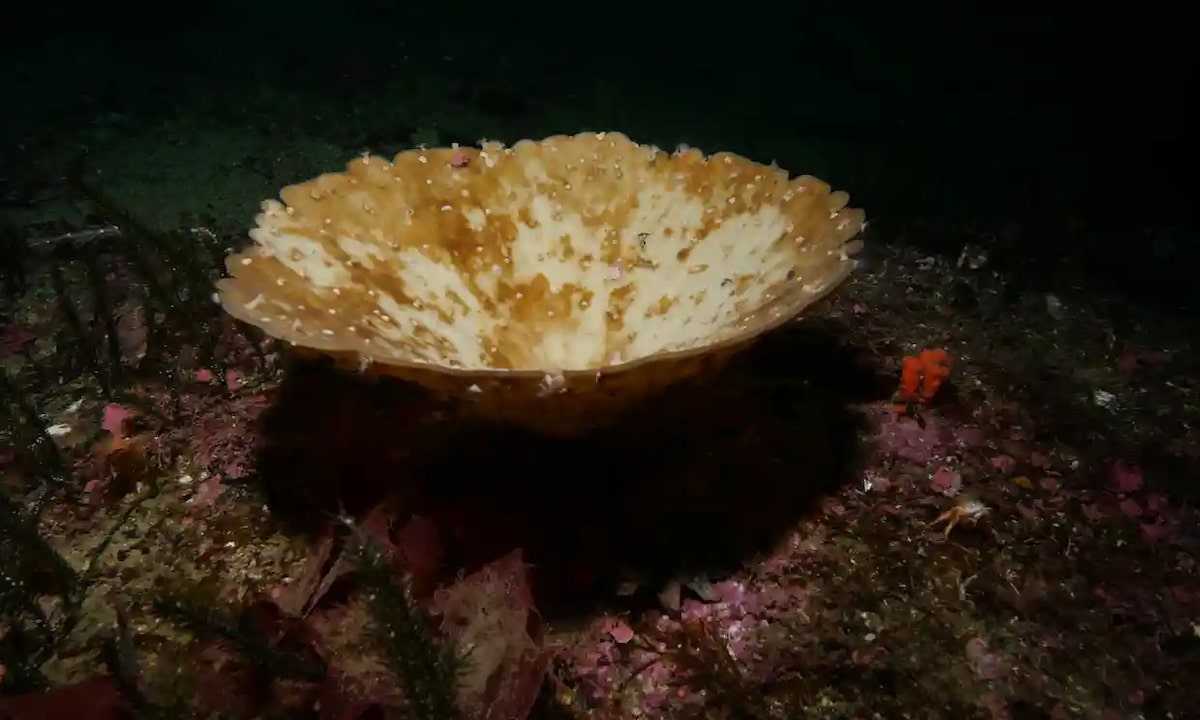Largest Ever Bleaching of Sea Sponges Recorded in New Zealand

 Why you can trust us
Why you can trust us
Founded in 2005 as an Ohio-based environmental newspaper, EcoWatch is a digital platform dedicated to publishing quality, science-based content on environmental issues, causes, and solutions.
Sea sponges are simple marine animals that have been around for about 600 million years. Their skeletons are dense and porous and they adapt well to their particular habitat, attaching themselves to different types of surfaces, from rocks and corals to soft sediments, like mud and sand. They have even been known to fasten themselves to floating debris, according to the National Ocean Service.
New Zealand is currently experiencing the largest ever recorded bleaching of sea sponges, according to scientists, following recent marine heatwaves, The Guardian reported.
“As far as we’re aware, it’s the largest scale and largest number of sponges bleached in one event that’s been reported anywhere in the world… certainly in cold waters,” said James Bell, marine ecologist and professor at Victoria University of Wellington, as reported by The Guardian.
Last month, the southern coast of New Zealand saw its sea sponges bleached for the first time ever. At first, scientists thought thousands of sea sponges had turned white, but explorations of the country’s coasts over the last month have shown that many more have been bleached.
“At least millions of sponges have been bleached in those environments, maybe even tens of millions — this is one of the most abundant sponges in Fiordland and so it’s a really wide scale event,” Bell said, as The Independent reported.
New Zealand has experienced two record marine heatwaves with temperatures up to five degrees above normal, said Dr. Robert Smith, oceanographer at the University of Otago, reported The Guardian. The extreme temperatures began last September in some places and lasted 213 days, Smith said, adding that the length of the increased temperatures was abnormal.
“At the northern and southern limits of New Zealand, we’ve seen the longest and strongest marine heatwave in 40 years, since satellite based measurements of ocean temperature began in 1981,” said Smith, as The Guardian reported.
Even if bleaching doesn’t completely kill the sponges, it causes organisms that take up residence inside them and provide them with food through photosynthesis to be expelled, denying the sponges nutrients and reducing their defenses.
According to Bell, some species of sea sponge are able to bounce back from extreme bleaching, while others are not.
“Some organisms are going to be OK with a day or a week above average temperatures – but once you start accumulating that heatstroke… we’re going to start to really feel the effects,” Smith said, as reported by The Guardian.
While Smith said it would be hard to say human-caused climate change was the culprit of a particular period of increased temperatures, oceans across the globe were heating up more often with higher temperatures for longer periods of time, and the intensity and length was predicted to increase.
“This just highlights the kind of climate crisis that we’re facing,” Bell said, as Indiatimes reported.
Subscribe to get exclusive updates in our daily newsletter!
By signing up, you agree to the Terms of Use and Privacy Policy & to receive electronic communications from EcoWatch Media Group, which may include marketing promotions, advertisements and sponsored content.

 233k
233k  41k
41k  Subscribe
Subscribe 




